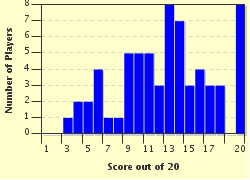Quiz Answer Key and Fun Facts
1. In 1868, Mikado Meiji became Emperor of Japan. He introduced a new era for his country. What is that change called?
2. In the late 19th century Japan emerged as a major power. In 1898, they defeated China in the First Sino-Japanese War. In 1905, they defeated Russia in the Russo-Japanese War. In 1910, they conquered and annexed Korea. In 1931 Japan also occupied Manchuria and set up a large puppet state there. They invaded China again in 1937, starting the Second Sino-Japanese War. By 1941, what was their next target?
3. After Japan refused to stop the invasion of French Indochina, how did the U.S. respond?
4. What was the real significance of the Japanese slogan 'Asia for the Asians'?
5. When Japan invaded Malaya, they did not attack Thailand. Why?
6. In Malaya, there was a Malay soldier who is well-known for his sacrifice against the Japanese invasion. Name the heroic veteran.
7. On the 15th of February, 1942, the British in Singapore surrendered to the Japanese, who were commanded by the "Malayan Tiger". Who was this "Malayan Tiger"?
8. Which of these was one of the many reasons why the Japanese was able to defeat the British?
9. Two British ships were sunk in the South China Sea. What were the names of the ships?
10. The 'Kesatuan Melayu Muda' was an organization that helped the Japanese throughout the battle of Malaya. What was their role?
11. After Japanese occupation began, Malaya was renamed 'Malai Baru'.
What was Singapore's new name?
12. Students were forced to sing the Japanese anthem. What was it called?
13. To invade Malaya, the Japanese used this formidable fighter plane to combat the weaker British planes. What was it?
14. Of the various sections of the population of Malaya, which suffered most under Japanese occupation?
15. Several anti-Japanese resistance groups were formed throughout Malaya. What was the significance of the Malayan People's Anti-Japanese Army (MPAJA)?
16. Another resistance group was the Wataniah of Pahang, with the Sultan of Pahang as 'Pemerintah Kehormat', but there was another famous person who joined Wataniah. Who was it?
17. In September, 1945, the Japanese returned Malaya, Singapore, Sarawak and Sabah to the British. Why did this 'miracle' happen?
18. Many people still dread to think of the many Malayans, other Asians and British, Dutch and other foreign prisoners of war, for being sent to Thailand to work under very harsh conditions. What did the Japanese do to them?
19. During the Japanese occupation, the people of Malaya feared the secret police of Japan. What was it called?
20. One good thing came out of the Japanese occupation of Malaya. What was it?
Source: Author
WW2Master123
This quiz was reviewed by FunTrivia editor
bloomsby before going online.
Any errors found in FunTrivia content are routinely corrected through our feedback system.

